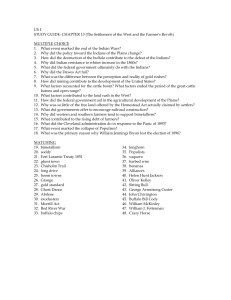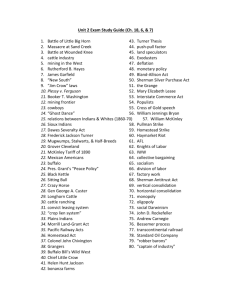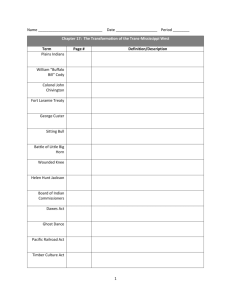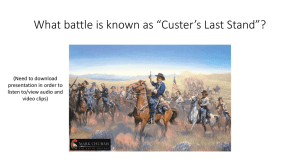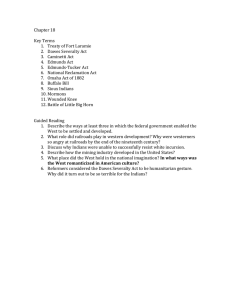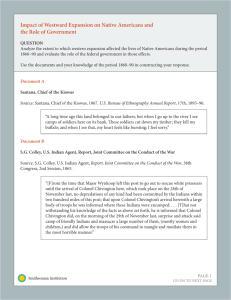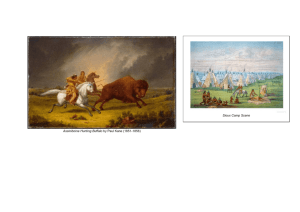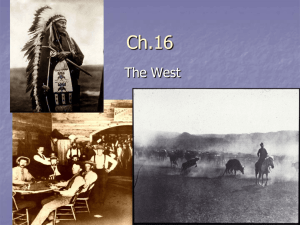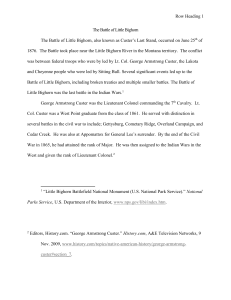American History
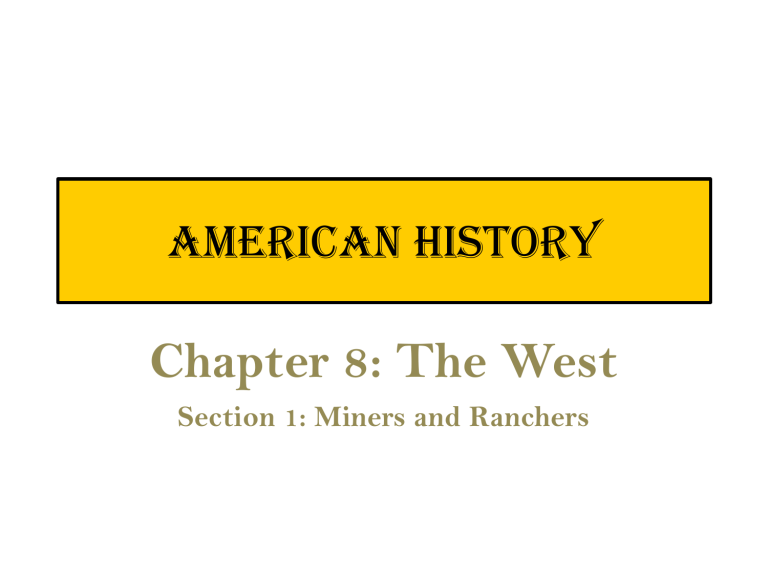
American History
Chapter 8: The West
Section 1: Miners and Ranchers
Comstock Lode
A “boom town”
Silver ore
Near Carson City, Nevada
Other Bonanzas*
Black Hills, S.D.(gold)
Leadville
(silver) gold
“Pikes Peak or Bust” a rich mass of ore, as found in mining
Montana (copper)
Ghost town
From boomtown to ----
Texas Longhorns
• Tough cattle that could survive harsh winters.
• They were responsible for the cattle boom in the West.
Long drives
Life of the cowboy
The trip from
Texas to go north to meet the railroads
railheads
Dodge City,
Kansas
“Cow towns” that sprang up along the railroad
End points for long drives
Life of the cowboy
CATTLE TRAILS
• Chisholm Trail*
• Western Trail
• Goodnight-Loving Trail
• Shawnee Trail
• * most famous
Chapter 8.2
Farming the Plains
Homestead Act
• For $10 a settler could claim 160 acres of land
• You had to live there for 5 years to get the title
Morrill Land Grant Act
• Gave land to states to establish state colleges and universities
• Could study agriculture there
• Iowa State University; South Dakota State, Minnesota State
Because they didn’t have lumber, settlers on the prairie built homes made of sod
Soddies
Difficulties of living on the prairie
Wheat Belt
Oklahoma Land Rush
1889
People rushed to stake claims when the government opened up one of the last territories for settlement (boomers and sooners)
Chapter 9.2
Railroads
Transcontinental Railroad
Central
Pacific
Chinese
Promontory Point
Union Pacific
Railroads: the symbol for western settlement
<--- Irish, Civil War vets
Sand Creek Massacre
Colonel Chivington hated
Indians.
Black Kettle and his Cheyenne people had already surrendered, and they camped at Sand Creek.
Chivington attacked the
Indians—even though they were flying a white flag, and he killed and mutilated all of them (more than 200).
Sitting Bull
The greatest Sioux Chief
Attacked Custer at the Battle of the Little big Horn
WHAT was he thinking?
Lt. Col. George Custer and about 200 soldiers attacked
2,500 Lakota and Cheyenne
Indians in broad daylight.
Battle of the
Little Bighorn
Ghost Dance
Later, troops tried to disarm Native
Americans at
Wounded Knee.
Twenty-five soldiers and about 200
Lakota men, women, and children were killed.
Wounded Knee
The government blamed the Ghost Dance on Sitting
Bull, and sent US troops to arrest him. He died in an exchange of gunfire.
Chief Joseph
Nez Perce chief
Because his people were sick and dying from running and fighting . . . .
“I will fight no more forever.”
Geronimo
Apache leader
His surrender in 1886 brought an end to the
Indian wars in the southwest.
The government wanted the Native Americans to become absorbed into white culture: English schools, white clothing, become farmers, give up their hair styles and rituals (to become similar)
ASSIMILATION
Dawes Act
• Forced reservations to be divided into farms
• “Extra” land was sold to whites
Characteristics of Plains Indians
Symbol of their way of life:
They lived in small tribes.
• Family
• Chief/elders
• Holy man/medicine man
They were semi-nomadic.
• Lived in teepees
• Could move camp quickly
• Followed the buffalo herds
They depended on the buffalo.
• Horses were important too.
They were a spiritual people.
• Dances, chants (for rain, buffalo)
• Holy man, spirit world
